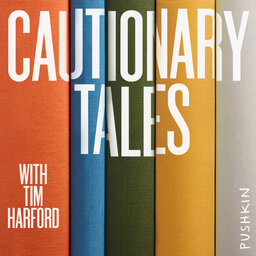Fritterin’ Away Genius
Claude Shannon was brilliant. He was the Einstein of computer science... only he loved "fritterin' away" his time building machines to play chess, solve Rubik's cubes and beat the house at roulette.
If Shannon had worked more diligently - instead of juggling, riding a unicycle and abandoning project after project - would he have made an even greater contribution to human knowledge? Maybe... and maybe not. Are restlessness and "fritterin'" important parts of a rich and creative life?
Read more about Tim's work at http://timharford.com/
Learn more about your ad-choices at https://www.iheartpodcastnetwork.com
 Cautionary Tales with Tim Harford
Cautionary Tales with Tim Harford


